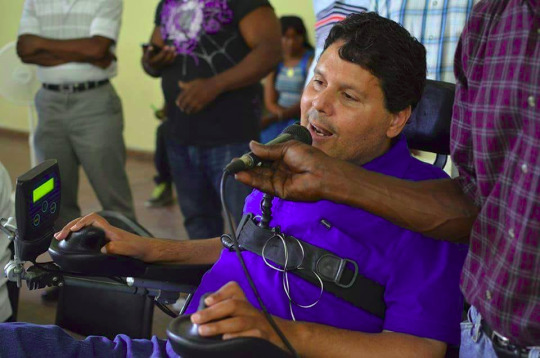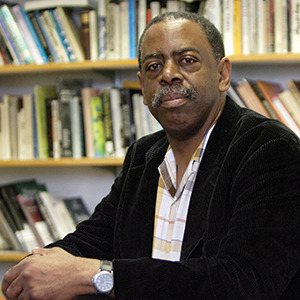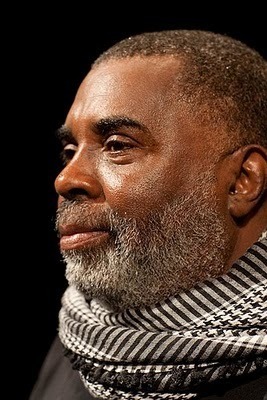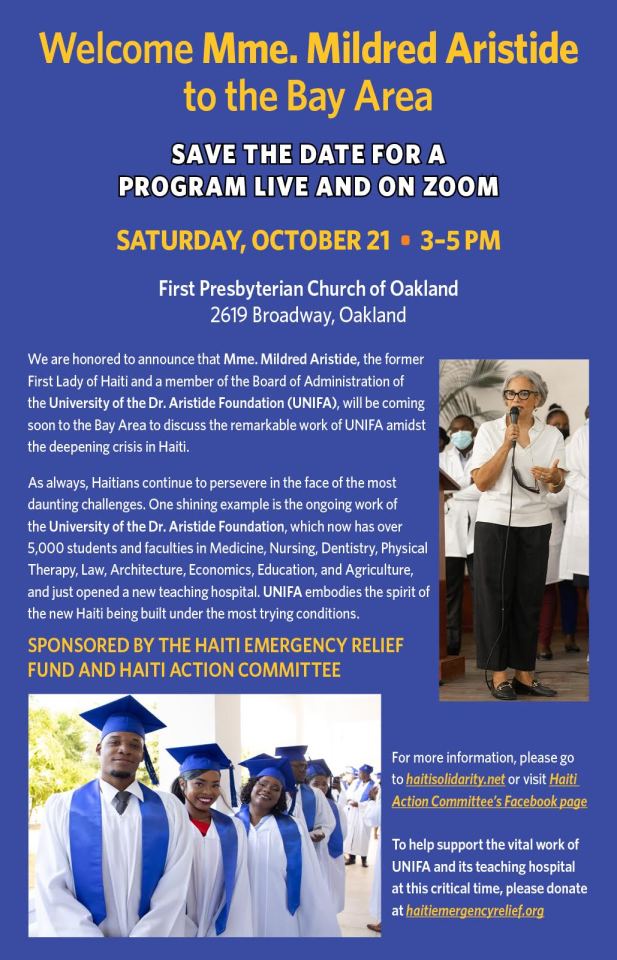#University of the Dr Aristide Foundation
Photo








(via HAITI: A CALL TO ACTION! SATURDAY, APRIL 6, 2024; 1-3 PM EASTSIDE ARTS ALLIANCE 2277 International Blvd, Oakland, CA.)
#Free Haiti#Marvin X#Dr Walter Turner#Dr Maryse Narcisse#Joel Pacha Vorbe#FANMI LAVALAS#Dr Jean-Bertrand Aristide#Le Marron Inconnu#Nèg Mawon#Maroon Man#Eastside Arts Alliance#Oakland CA#20th Anniversary of the 2004 US instigated coup against Haiti#Pierre Labossiere#Haiti Action Committee#Haiti Emergency Relief Fund#Africa Today#Andrew Reynolds#Dr. Rama Ali Kased#Free Palestine#Free The Sudan#Free the Democratic Republic of the Congo#Global Exchange#Race & Resistance Studies at San Francisco State University#Nou Pap Obeyi#University of the Dr Aristide Foundation
3 notes
·
View notes
Link
If the Trump administration and its allies continue to pursue their reckless course in Venezuela, the most likely result will be bloodshed, chaos, and instability.
The following open letter—signed by 70 scholars on Latin America, political science, and history as well as filmmakers, civil society leaders, and other experts—was issued on Thursday, January 24, 2018 in opposition to ongoing intervention by the United States in Venezuela.
The United States government must cease interfering in Venezuela’s internal politics, especially for the purpose of overthrowing the country’s government. Actions by the Trump administration and its allies in the hemisphere are almost certain to make the situation in Venezuela worse, leading to unnecessary human suffering, violence, and instability.
Venezuela’s political polarization is not new; the country has long been divided along racial and socioeconomic lines. But the polarization has deepened in recent years. This is partly due to US support for an opposition strategy aimed at removing the government of Nicolás Maduro through extra-electoral means. While the opposition has been divided on this strategy, US support has backed hardline opposition sectors in their goal of ousting the Maduro government through often violent protests, a military coup d’etat, or other avenues that sidestep the ballot box.
Under the Trump administration, aggressive rhetoric against the Venezuelan government has ratcheted up to a more extreme and threatening level, with Trump administration officials talking of “military action” and condemning Venezuela, along with Cuba and Nicaragua, as part of a “troika of tyranny.” Problems resulting from Venezuelan government policy have been worsened by US economic sanctions, illegal under the Organization of American States and the United Nations ― as well as US law and other international treaties and conventions. These sanctions have cut off the means by which the Venezuelan government could escape from its economic recession, while causing a dramatic falloffin oil production and worsening the economic crisis, and causing many people to die because they can’t get access to life-saving medicines. Meanwhile, the US and other governments continue to blame the Venezuelan government ― solely ― for the economic damage, even that caused by the US sanctions.
Now the US and its allies, including OAS Secretary General Luis Almagro and Brazil’s far-right president, Jair Bolsonaro, have pushed Venezuela to the precipice. By recognizing National Assembly President Juan Guaido as the new president of Venezuela ― something illegal under the OAS Charter ― the Trump administration has sharply accelerated Venezuela’s political crisis in the hopes of dividing the Venezuelan military and further polarizing the populace, forcing them to choose sides. The obvious, and sometimes stated goal, is to force Maduro out via a coup d’etat.
The reality is that despite hyperinflation, shortages, and a deep depression, Venezuela remains a politically polarized country. The US and its allies must cease encouraging violence by pushing for violent, extralegal regime change. If the Trump administration and its allies continue to pursue their reckless course in Venezuela, the most likely result will be bloodshed, chaos, and instability. The US should have learned something from its regime change ventures in Iraq, Syria, Libya, and its long, violent history of sponsoring regime change in Latin America.
Neither side in Venezuela can simply vanquish the other. The military, for example, has at least 235,000 frontline members, and there are at least 1.6 million in militias. Many of these people will fight, not only on the basis of a belief in national sovereignty that is widely held in Latin America ― in the face of what increasingly appears to be a US-led intervention ― but also to protect themselves from likely repression if the opposition topples the government by force.
In such situations, the only solution is a negotiated settlement, as has happened in the past in Latin American countries when politically polarized societies were unable to resolve their differences through elections. There have been efforts, such as those led by the Vatican in the fall of 2016, that had potential, but they received no support from Washington and its allies who favored regime change. This strategy must change if there is to be any viable solution to the ongoing crisis in Venezuela.
For the sake of the Venezuelan people, the region, and for the principle of national sovereignty, these international actors should instead support negotiations between the Venezuelan government and its opponents that will allow the country to finally emerge from its political and economic crisis.
Signed:
Noam Chomsky, Professor Emeritus, MIT and Laureate Professor, University of Arizona
Laura Carlsen, Director, Americas Program, Center for International Policy
Greg Grandin, Professor of History, New York University
Miguel Tinker Salas, Professor of Latin American History and Chicano/a Latino/a Studies at Pomona College
Sujatha Fernandes, Professor of Political Economy and Sociology, University of Sydney
Steve Ellner, Associate Managing Editor of Latin American Perspectives
Alfred de Zayas, former UN Independent Expert on the Promotion of a Democratic and Equitable International Order and only UN rapporteur to have visited Venezuela in 21 years
Boots Riley, Writer/Director of Sorry to Bother You, Musician
John Pilger, Journalist & Film-Maker
Mark Weisbrot, Co-Director, Center for Economic and Policy Research
Jared Abbott, PhD Candidate, Department of Government, Harvard University
Dr. Tim Anderson, Director, Centre for Counter Hegemonic Studies
Elisabeth Armstrong, Professor of the Study of Women and Gender, Smith College
Alexander Aviña, PhD, Associate Professor of History, Arizona State University
Marc Becker, Professor of History, Truman State University
Medea Benjamin, Cofounder, CODEPINK
Phyllis Bennis, Program Director, New Internationalism, Institute for Policy Studies
Dr. Robert E. Birt, Professor of Philosophy, Bowie State University
Aviva Chomsky, Professor of History, Salem State University
James Cohen, University of Paris 3 Sorbonne Nouvelle
Guadalupe Correa-Cabrera, Associate Professor, George Mason University
Benjamin Dangl, PhD, Editor of Toward Freedom
Dr. Francisco Dominguez, Faculty of Professional and Social Sciences, Middlesex University, UK
Alex Dupuy, John E. Andrus Professor of Sociology Emeritus, Wesleyan University
Jodie Evans, Cofounder, CODEPINK
Vanessa Freije, Assistant Professor of International Studies, University of Washington
Gavin Fridell, Canada Research Chair and Associate Professor in International Development Studies, St. Mary’s University
Evelyn Gonzalez, Counselor, Montgomery College
Jeffrey L. Gould, Rudy Professor of History, Indiana University
Bret Gustafson, Associate Professor of Anthropology, Washington University in St. Louis
Peter Hallward, Professor of Philosophy, Kingston University
John L. Hammond, Professor of Sociology, CUNY
Mark Healey, Associate Professor of History, University of Connecticut
Gabriel Hetland, Assistant Professor of Latin American, Caribbean and U.S. Latino Studies, University of Albany
Forrest Hylton, Associate Professor of History, Universidad Nacional de Colombia-Medellín
Daniel James, Bernardo Mendel Chair of Latin American History
Chuck Kaufman, National Co-Coordinator, Alliance for Global Justice
Daniel Kovalik, Adjunct Professor of Law, University of Pittsburgh
Winnie Lem, Professor, International Development Studies, Trent University
Dr. Gilberto López y Rivas, Professor-Researcher, National University of Anthropology and History, Morelos, Mexico
Mary Ann Mahony, Professor of History, Central Connecticut State University
Jorge Mancini, Vice President, Foundation for Latin American Integration (FILA)
Luís Martin-Cabrera, Associate Professor of Literature and Latin American Studies, University of California San Diego
Teresa A. Meade, Florence B. Sherwood Professor of History and Culture, Union College
Frederick Mills, Professor of Philosophy, Bowie State University
Stephen Morris, Professor of Political Science and International Relations, Middle Tennessee State University
Liisa L. North, Professor Emeritus, York University
Paul Ortiz, Associate Professor of History, University of Florida
Christian Parenti, Associate Professor, Department of Economics, John Jay College CUNY
Nicole Phillips, Law Professor at the Université de la Foundation Dr. Aristide Faculté des Sciences Juridiques et Politiques and Adjunct Law Professor at the University of California Hastings College of the Law
Beatrice Pita, Lecturer, Department of Literature, University of California San Diego
Margaret Power, Professor of History, Illinois Institute of Technology
Vijay Prashad, Editor, The TriContinental
Eleanora Quijada Cervoni FHEA, Staff Education Facilitator & EFS Mentor, Centre for Higher Education, Learning & Teaching at The Australian National University
Walter Riley, Attorney and Activist
William I. Robinson, Professor of Sociology, University of California, Santa Barbara
Mary Roldan, Dorothy Epstein Professor of Latin American History, Hunter College/ CUNY Graduate Center
Karin Rosemblatt, Professor of History, University of Maryland
Emir Sader, Professor of Sociology, University of the State of Rio de Janeiro
Rosaura Sanchez, Professor of Latin American Literature and Chicano Literature, University of California, San Diego
T.M. Scruggs Jr., Professor Emeritus, University of Iowa
Victor Silverman, Professor of History, Pomona College
Brad Simpson, Associate Professor of History, University of Connecticut
Jeb Sprague, Lecturer, University of Virginia
Christy Thornton, Assistant Professor of History, Johns Hopkins University
Sinclair S. Thomson, Associate Professor of History, New York University
Steven Topik, Professor of History, University of California, Irvine
Stephen Volk, Professor of History Emeritus, Oberlin College
Kirsten Weld, John. L. Loeb Associate Professor of the Social Sciences, Department of History, Harvard University
Kevin Young, Assistant Professor of History, University of Massachusetts Amherst
Patricio Zamorano, Academic of Latin American Studies; Executive Director, InfoAmericas
#venezuela#noam chomsky#chomsky#medea benjamin#boots riley#antiwar#anti-war#anti-imperialism#liberal interventionism#interventionism#politics#us politics#donald trump#nicolas maduro#jair bolsorano#oas#juan guaidó#laura carlsen#greg grandin
14 notes
·
View notes
Text
In Memoriam: Raymond G. Perelman
Raymond G. Perelman, 1917–2019
The Philadelphia Museum of Art is saddened by the loss of Raymond G. Perelman, 101, who served as a trustee for more than forty years, as chair of the board of trustees, and as chair emeritus.
A child of Lithuanian immigrants, his life was deeply rooted in Philadelphia. While he became known at first as a businessman, his reputation in philanthropy also grew with his success.
“Together with his late wife, Ruth, Ray Perelman was an exceptional philanthropist who understood deeply the importance of giving back to the community in the most meaningful and decisive way,” said Timothy Rub, the museum’s George D. Widener Director and Chief Executive Officer. “The institutions for which the couple made a major difference are many, and among them the museum held a special place. Ray was a trustee for more than forty years, and he served as chair of the board from 1997 until 2001. His leadership was nowhere more critical than in his dedication to stewardship. Not only were the Perelmans generous lenders of their art collection, but their $15 million gift to the museum was both timely and transformative. It enabled the museum in 2000 to acquire the beautiful Reliance Standard Life Insurance building, which now bears their names. This represented the first expansion of the museum’s footprint since 1928 and set the museum on a path to undertake its Facilities Master Plan.”
“It was the right gift at the right time, and Ray was so enthusiastic about it,” added Gail Harrity, the museum’s president and chief operating officer. “He loved the fact that in the 1920s the Perelman Building had been designed by some of the same architects who built the main museum building across the street. Ray certainly knew the importance of good timing—and of course Ruth had something to do with that. He always seized the day as a businessman, as board chair, and in countless initiatives over the course of a lifetime that was as remarkable as it was long.”
Ray graduated from the Wharton School at the University of Pennsylvania, and his first venture into business was his family’s company, American Paper Products. He expanded the company by opening a plant in Greensboro, North Carolina, where he met his wife, Ruth (who passed away in 2011). After serving as a flight officer in the Air Force during World War II, Ray started to develop his business niche by buying properties, buildings, and companies in Philadelphia.
In 1960 Ray bought Belmont Iron Works, the largest steel fabricator in the Northeast, and acquired many additional companies that were consolidated under the Belmont Holdings Corporation name. After a fruitless house hunt in the 1970s, he built 1820 Rittenhouse Square, where he and Ruth occupied the penthouse with views of the museum. He also owned and operated Dicalite/Dicaperl Minerals Inc.
While Ray became a businessman of international renown, he was not well-off as a child. Still, he was taught to put a coin or two in the pushka (charity box) for the Israel hospital, and passed on the value to his sons, Ronald and Jeffrey, who followed his footsteps in business.
With the Perelman name now gracing the University of Pennsylvania’s Perelman School of Medicine, the Perelman Jewish Day School, the Kimmel Center’s Perelman Theater, and many other organizations, the whole city has experienced the impact of the Perelmans. Ruth and Ray were both involved with numerous civic organizations, including the United Way, the National Museum of American Jewish History, and the Albert Einstein Health Center, and as trustees of the Raymond and Ruth Perelman Education Foundation, Inc.
In 2003 Ray was recognized by the Arts & Business Council of Greater Philadelphia as that year’s recipient of the Arts & Business Council Award, and in 2011 he received the University of Pennsylvania Medal for Distinguished Achievement.
Ruth and Ray initially became involved with the museum in 1969 as founding members of the museum’s Friends group, now known as the Associates. Ray was a major contributor to the museum’s Landmark Renewal Fund, a campaign that concluded in 1993. Over the years, with their fondness for modern art, the Perelmans lent works by Aristide Maillol, Pablo Picasso, and Georges Braque to the museum.
With their $15 million gift to support the museum’s purchase of the Reliance Standard Life Insurance Building on Pennsylvania Avenue, the Art Deco building was transformed under the guidance of architect Richard Gluckman, opening to the public in 2007. Dedicated exhibition spaces for photography, costume and textiles, and modern and contemporary design, as well as the Library and Archives and the Wachovia Education Resource Center, have presented additional offerings for visitors. The Perelman Building was also equipped with new conservation labs, climate-controlled storage, and offices providing invaluable day-to-day support.
On the tenth anniversary of the opening of the Perelman Building in 2017—the year Ray celebrated his one-hundredth birthday—the citywide project Philadelphia Assembled culminated at the Perelman Building, which acted as a centralized location for conversation about changes in Philadelphia. Given how much Ray and Ruth helped to change Philadelphia through their generosity, this was a moment to honor the Perelmans once again and to reflect upon a legacy of support in securing the future for the city and the museum. We will remember that legacy with every exhibition, program, and event held in the Perelman Building.
H. F. “Gerry” Lenfest, 1930–2018
The Museum mourns the passing of H. F. “Gerry” Lenfest, 88, who served as Chair of the Museum’s Board of Trustees from 2001 to 2010, and thereafter as a Trustee Emeritus. Few individuals have given so graciously of their time and so freely of their resources, and fewer still have had such an enormous impact on the Museum’s history. Gerry’s leadership contributed greatly to the Museum’s effort to strengthen its endowment and to renew and expand its facilities, including the landmark main building. Born in Jacksonville, Florida, and raised in Scarsdale, New York, and on his family’s farm in New Jersey, Gerry ultimately adopted Philadelphia as his home, and it is here that he made the greatest impact as a civic leader and philanthropist. Educated at Washington and Lee University and Columbia Law School, he began his legal career at the New York law firm Davis Polk & Wardwell, and subsequently became corporate counsel to the late Walter Annenberg’s Triangle Publications. He long credited Annenberg for giving him his start in business. In 1973, along with two other investors, Lenfest purchased the Suburban Cable and Lebanon Valley Cable television operations from Annenberg. The company was sold to Comcast in 2000, after which he and his wife Marguerite committed to give most of their wealth away to charitable causes. As a philanthropist, Lenfest was drawn early to the Philadelphia Museum of Art because of his passion for art and by the recognition that the Museum serves as an economic driver in the city. He was also impressed by its rich history, during which it has been supported by generations of generous donors whose gifts enhanced the Museum’s collection and strengthened its programs and educational activities. Among those whose service spoke most compellingly to him were the civic leader Eli Kirk Price, who as Chairman of the Museum’s Board of Trustees, championed the construction of its new home on Fairmount in the early decades of the twentieth century; the dynamic and long-serving Director of this institution Fiske Kimball, who completed our main building, finished its interiors, and expanded our world-renowned collection; and philanthropists Leonore and Walter Annenberg. In 2006, the Lenfests gave crucial support to the city-wide initiative to keep Thomas Eakins’s Portrait of Dr. Samuel D. Gross (The Gross Clinic) (1875) in Philadelphia and described saving the work as a matter of civic pride. This reflected their deep appreciation for American art, which included a strong interest in the work of African American artists, notably William H. Johnson. Gerry led the Board in adopting strategic plans and, in addition to the development of the comprehensive Facilities Master Plan, was instrumental in launching new digital technology initiatives and collaborative marketing efforts to attract new and more diverse audiences. The Lenfests also launched a challenge grant for donors to match their gift one-to-one, in order to endow twenty-nine staff positions that span curatorial, conservation, library, archives, education, publishing, and other functions. This transformational gift, known as The Lenfest Challenge, encouraged twenty-seven donors to name positions that are vital to the Museum’s mission and the excellence of its programs. In March 2010, during an interview in his Conshohocken office, Gerry reflected on his philanthropy and work with the Museum over the course of a decade. “I never had much wealth until 2000, after the sale of Suburban Cable,” he said. “At that time, sitting in my kitchen in Huntingdon Valley, I read a book by a person who studied philanthropy—Waldemar Nielson. It was called Inside American Philanthropy: The Dramas of Donorship. “He had two tenets that stuck with me: Don’t create a family foundation, and don’t create a foundation in perpetuity, but rather have the satisfaction in your lifetime during which you can see the impact. So, we’ve given most of our wealth away in the last ten years and I’ve seen the impact. It gives you a good feeling to know that the wealth you’ve accumulated can be used for good purposes…because the ultimate achievement in life is to feel good about yourself, and wealth carries responsibility.” Asked what had given him the most satisfaction in his work with the Museum, he mentioned its evolution over the period of nine years when he served as chair, its economic impact, and its importance in the life of the City of Philadelphia. The endowment, he said, effectively doubled from 2001 through 2010. He remarked upon several other milestones, including the acquisition of the offsite art storage facility for the Museum’s collection; the renovation of the main building’s exterior envelope; and the creation of the new parking garage and the Anne d’Harnoncourt Sculpture Garden. He also noted his work with the Annenberg Foundation to place the Museum on a sound financial basis. He drew energy, he added, from the challenge of addressing three key objectives, including the renovation and expansion of the Museum’s facilities under the Master Plan; expanding the Museum’s reach across diverse communities; and taking the Museum forward into the digital age. Lenfest had originally intended to step down as Board Chair prior to 2010, but with the unexpected death of then Director Anne d’Harnoncourt in 2008, he not only extended his term and put interim leaders Gail Harrity and Alice Beamesderfer in place, but he continued to chart the Museum’s course forward for a smooth transition. Two years later when he passed the Board leadership to Constance M. Williams, he expressed great pleasure, noting the appointment of a new director, Timothy Rub, and what he would describe as “this new team that will continue the evolving of excellence.” As the interview concluded, he was asked one final question: “Is it true that you still mow your own lawn in Huntingdon Valley?” Lenfest smiled and replied, “True, but we don’t have much of a lawn, because we live under a lot of trees—we’ve lived in the same house for forty-four years.” He then paused and added, “And we also fly coach.” Gerry Lenfest will be long remembered and deeply missed by the Museum’s Board of Trustees, leadership, and members of the Museum staff. He was an exemplary Board Chair, a model citizen, and an inspiration for his home city of Philadelphia.
Source: http://www.philamuseum.org/information/43-323.html?page=3
0 notes
Photo

(via Mme. Mildred Aristide is coming to the Bay Area!)
#Haiti#Haiti Emergency Relief Fund#Mme Mildred Aristide#HERF#Dr. Nia Imara#Tarika Lewis#Walter Riley#Pierre Labossiere#Destiny Muhammad#Francisco Herrera#UNIFA#University of the Dr Aristide Foundation#Haiti Action Committee#Stand With Haiti#Global Exchange]
0 notes
Photo

(via Mme. Mildred Aristide is coming to the Bay Area!)
#Mme. Mildred Aristide#Bay Area#Haiti#UNIFA#University of the Dr Aristide Foundation#Haiti Action Committee#Haiti Emergency Relief Fund#Dr Jean-Bertrand Aristide
0 notes
Photo

(via Mme. Mildred Aristide is coming to the Bay Area!)
#Haiti#UNIFA#Mme Mildred Aristide#First Presbyterian Church of Oakland#Haiti Emergency Relief Fund#University of the Dr. Aristide Foundation#Bay Area#Haiti Action Committee
0 notes
Text
LIVE GRADUATION CEREMONY: HAITI’s University of the Aristide Foundation 2023 - 6:00 AM PST
twitter.com/serious2020/status/1639980340591853568
View On WordPress
#African/Black experience#Afrikan#Artists#culture#Dr. Jean-Bertrand Aristide#Dr. Maryse Narcisse#Fanmi Lavalas#freedom#Haiti#Haiti Action Committee#liberation#revolutionary#science#University of the Aristide Foundation
0 notes
Text

#african/black experience#afrikan#culture#freedom#revolutionary#University of the Aristide Foundation#revolutionary leaders#Haiti#Dr Jean-Bertrand Aristide#Attorney Mildred Aristide#FANMI LAVALAS#3/18/22 196 graduates 🎓
0 notes
Text
HAITI: 196 New Graduates at the University of the Aristide Foundation
HAITI: 196 New Graduates at the University of the Aristide Foundation
3/15/2022
GREAT NEWS!
This past Sunday, March 13, 2022, 196 students graduated from the University of Dr. Aristide Foundation (UNIFA).
Among the graduates are:
(1) One hundred twenty-eight (128) students from the school of medicine and health sciences,
(2) Twelve (12) students from the school of engineering and architecture,
(3) Eighteen (18) from the school of legal and political…
View On WordPress
#African/Black experience#culture#Education#freedom#Haiti#Haiti Action Committee Bay Area#Haiti Emergency Relief Fund (HERF)#HERF#Mrs. Mildred Aristide#President Jean-Bertrand Aristide#revolutionary#University of the Aristide Foundation
0 notes